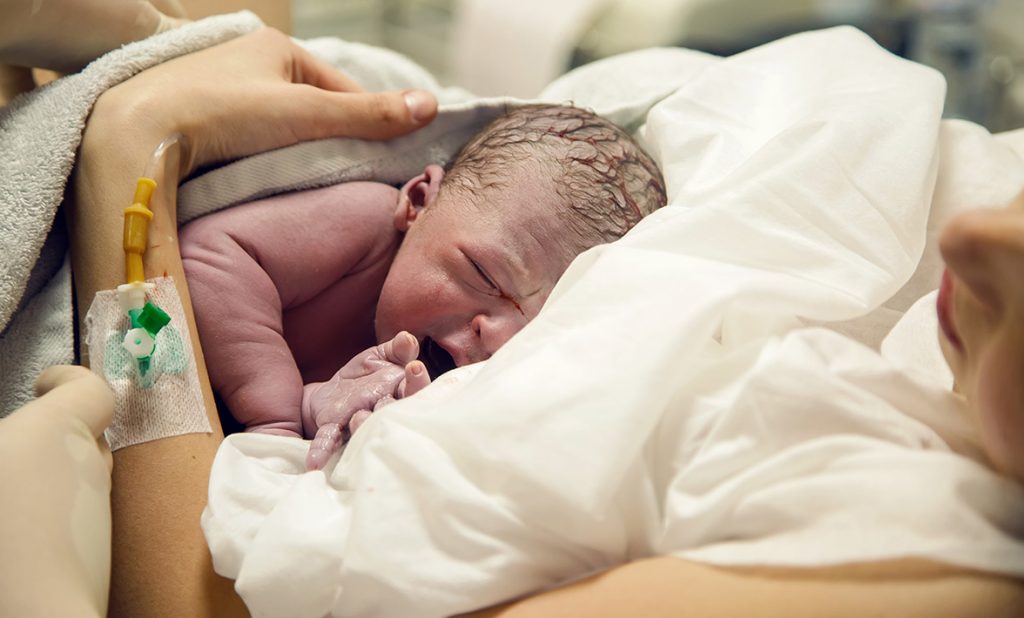From afterpains to postpartum bleeding, knowing what to expect can take some of the stress out of your birthing experience.
Until we fall pregnant, most of us are blissfully happy to have only the vaguest notion of the mechanics of labour and birth. Sure, we know the meaning of terms like C-section, epidural and being induced, but we prefer to remain more or less ignorant of the nitty gritty details.
That all changes once we fall pregnant ourselves. Suddenly, we’re desperate for information, devouring every pregnancy book, birthing website and mama blog we can get our hands on, as we struggle to get our heads around the wonderful, exciting, frightening challenge coming our way. Together with antenatal classes and advice from other mums, we tend to eventually learn everything we need to know ahead of our big day. But there are also likely to be a few surprises – challenges and opportunities that completely blindside you.
With that in mind, here are five of the most common blind spots that pregnant women and new mums report experiencing on their pregnancy journey.
1. You may require an episiotomy
In some cases, women have relatively simple deliveries, with the baby arriving promptly and with minimal fuss. But in cases where your baby is experiencing physical distress and elevated heart rate during a prolonged delivery, the medical team on hand will look for ways to speed up the birthing process. One of these is an episiotomy – a surgical cut in the vaginal opening made to make it easier for the baby to come out. As well as accelerating the baby’s entry into the world, episiotomies are designed to reduce potential tissue tearing and scarring during birth. It’s confronting stuff, but something you should be aware of. You can read more about the debate around episiotomies on the The Conversation blog by Hannah Dahlen, a professor of midwifery at Western Sydney University.
2. You may experience significant postpartum bleeding
Many new mothers are surprised at how much they bleed following childbirth – and it’s a detail other mums tend to forget when sharing their childbirth stories. After the delivery, postpartum bleeding – or ‘lochia’ – occurs, with women expelling a discharge containing blood, mucus, and uterine tissue. The amount of discharge varies from woman to woman and while the most intense bleeding occurs in the first two to three days, the process can continue for up to six weeks. The bleeding is often worse when standing up after lying down or being seated, when breastfeeding, or during physical exercise. Web MD has a useful article on the subject if you’re interested in learning more.
3. You may experience afterpains
We all know about the pain associated with childbirth itself, but many women are surprised to learn about afterpains – sharp cramps that occur in the days following the delivery of your baby. Caused by the uterus gradually contracting back to its pre-pregnancy size, afterpains can be quite severe, with some women even reporting that the pain is worse than that of their labour. The sensation can range from something similar to contractions through to mild period-like pain. While you may feel uncomfortable, it may help to remember that what you’re feeling is a healthy part of the birthing process and an indication that your body is returning to its non-pregnant state. If the pain is severe, seek medical advice.
4. You may have difficulties breastfeeding
In the movies when a woman gives birth, you see her propped up in her hospital bed a few hours later happily breastfeeding, but real life isn’t so straight forward. Many women experience either initial or ongoing difficulties in breastfeeding their babies. In some instances, women may not be able to breastfeed at all, with complications including intense pain and mastitis from poor latching or engorgement. If this occurs, consult with your medical professional, who will generally offer great advice tailored to your particular circumstances. The Australian Breastfeeding Association also offers a supportive environment to learn techniques, troubleshoot any issues and to gain emotional support. They also offer a 24-hour hotline for breastfeeding questions, and have a live-chat assistant.

5. You’ll fall in love
You’ll hear other mums and dads talk about it, but until you experience it for yourself you won’t fully understand just how it feels to fall in love with a newborn. Think about being a giddy, hormone-affected teenager falling in love for the first time. Now multiply that by 100 and you’re just starting to get the picture. Bringing a new life into the world is one of the most incredibly humbling, gratifying and life-changing events that you will ever experience. Your life will never be about just you again, and that can only be a good thing. There are many ups and downs of childbirth, where your body will astound you in what it can achieve. Like you’ll hear time and time again- it’s all entirely worth it as you count 10 fingers and toes, and look ahead to a brand new life with bub.
